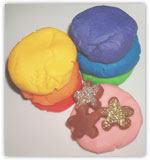 A tactile wholegrain playdough recipe using wholemeal brown flour and wheat. If you love bakeries and
the smell of raw dough, this delicious idea is definitely for you! It's not
edible, rolls beautifully and is made from a variety of ingredients that,
aside from the ears of wheat, can most likely be gathered from the kitchen
food cupboard. A bunch of dried grain stalks can be easily sourced online
or maybe you have a local cereal crop owner happy to donate a handful of
ears to the cause of early learning! For the young doughy sculpters there
are a few printable activity sheets below that help with counting, colouring
and playdough shaping skills.
A tactile wholegrain playdough recipe using wholemeal brown flour and wheat. If you love bakeries and
the smell of raw dough, this delicious idea is definitely for you! It's not
edible, rolls beautifully and is made from a variety of ingredients that,
aside from the ears of wheat, can most likely be gathered from the kitchen
food cupboard. A bunch of dried grain stalks can be easily sourced online
or maybe you have a local cereal crop owner happy to donate a handful of
ears to the cause of early learning! For the young doughy sculpters there
are a few printable activity sheets below that help with counting, colouring
and playdough shaping skills.
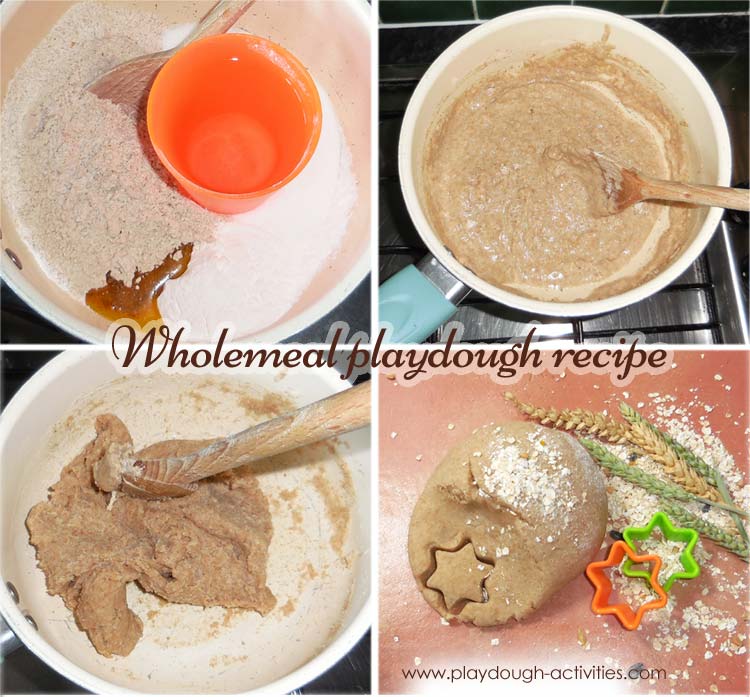
To Make, place the brown wholemeal brown flour, salt, water,oil
and cream of tartar in a saucepan and cook over a moderate heat, stir continuously
until the mixture comes together to form a ball. Turn this out and allow
the mound to cool a little before kneading it into a smooth, soft textured
dough.The elastic consistency will continue to improve the more it's played
with, one of the awesome things about handmade playdough! Store in an airtight
container.
'Help develop toddler's fine motor skills by placing a range
of malleable materials in a basin' Play and Learning in the Early Years p41 Jennie
Lindon,Alice Sharp
For children to enjoy the first hand experience of dough making, provide
the resources for them to make their own. It won't keep as long as cooked
versions but the learning this activity involves offers a great many opportunities
to discover material properties, what wet and dry ingredients look like,
how they smell, feel and move, and what happens when they're mixed together.
If the entire process concludes, there's additional possibilities held in
the doughy outcome!
Quantities recipe ingredients
 150gm whole wheat brown flour
150gm whole wheat brown flour
 130gm salt
130gm salt
 2 tbs cream of tartar (optional)
2 tbs cream of tartar (optional)
 2tbs oil
2tbs oil
 200ml water
200ml water
'loose parts' to decorate the surface and body of the cooked dough
 ears of wheat or corn (green in July, golden in october)
ears of wheat or corn (green in July, golden in october)
 bird seed
bird seed
 rolled oats
rolled oats
 Tools: rolling pins, scissors and cutters
Tools: rolling pins, scissors and cutters
|
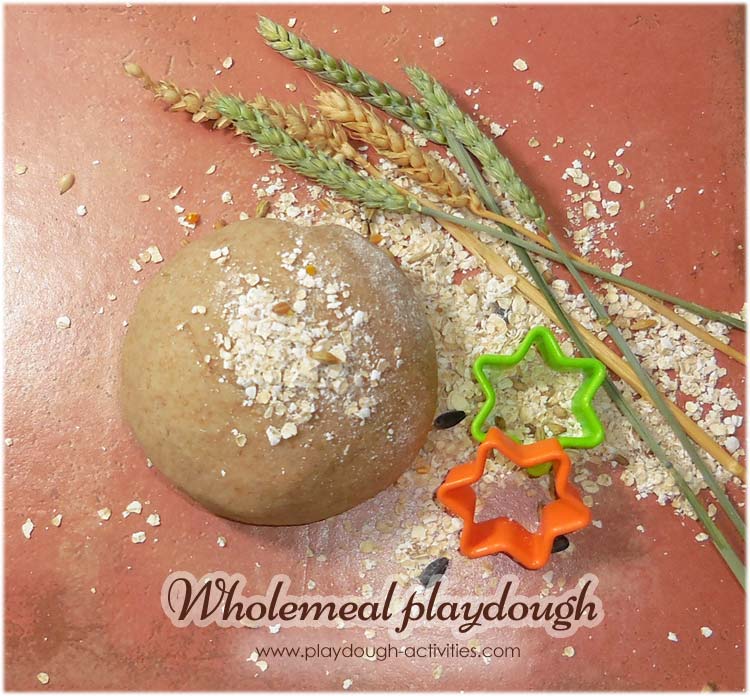
|
Playdough
counting mats - preschool numbers 1-10 Ideal for young children
as they encounter numeral formations, sequences and begin to discover the
concept of totals, addition and subtraction. Print the set of cards
and cut out each one individually. Laminate to protect the paper from any
oils in the playdough and if wanted hole punch to make them into a flip chart resource.
Explain to the children how they can roll grains of playdough to fill
in the missing/greyed out areas of each wheat stalk, so making the number
up to 10. If you've used the flipchart option have fun turning over each completed
page and squishing the dough between cards! The laminate ensures the dough
and any chalk pens will wipe off cleanly ready for using
again.
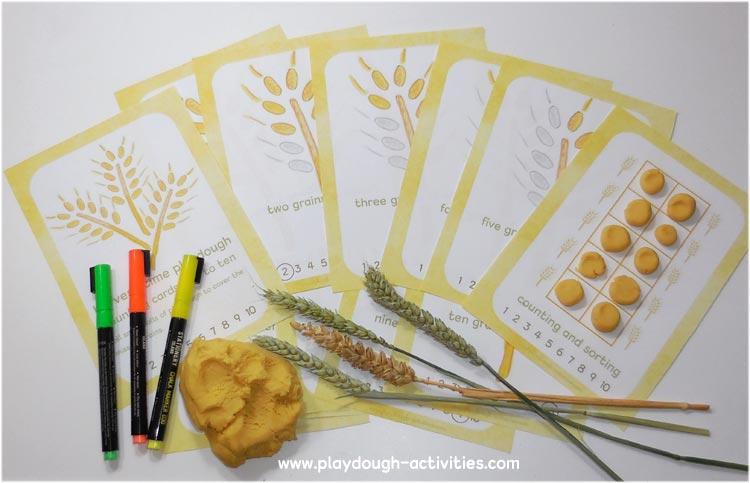
Empty laminated pouches make
great tracing sheets. Attach them ontop of the chosen picture using paperclips
and write on the surface using chalk pens. Remove when ready and fill with pieces of
playdough.
Wheat grain counting and shapes practice
adding with small ballsof playdough and numbers up to 10. On the shapes sheet,
roll out ropes of dough and form them using the words as labels.
An alternative to buying or requesting wheat stemsis to grow your
own! Ours
grew naturally, albeit somewhat wildly in a tub at the bottom of the outdoor
garden surrounded by tall unfettered grass and yellow toadflax. Perfect seeds
to include in your meadow
area or verge side spring sowing!
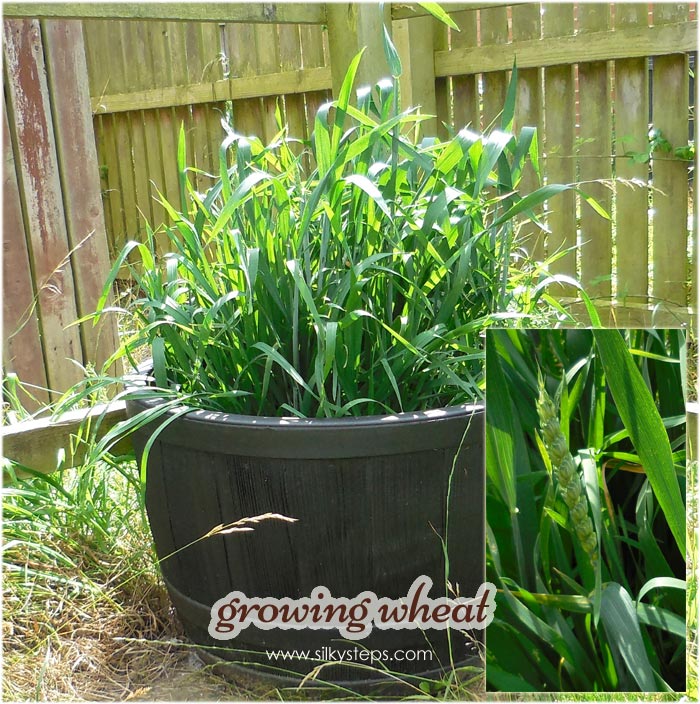
|
wheat, barley, oat or rye seeds
Being
July the heads are currently green,perfect for picking so that come August
when they've ripened into theirfamiliar gold, there'll be a nice colour contrast
to explore.
Once you have everything ready, use the ears to decorate and surface print.This
can be made more interesting by using rolling pins. Arrange the ears as wished
and then press down firmly to cause an indentation, flattening with a roller
acheives deeper, detailed imprints. Lift the stalks gently to see the positive
and negative space created by the new impressions. |
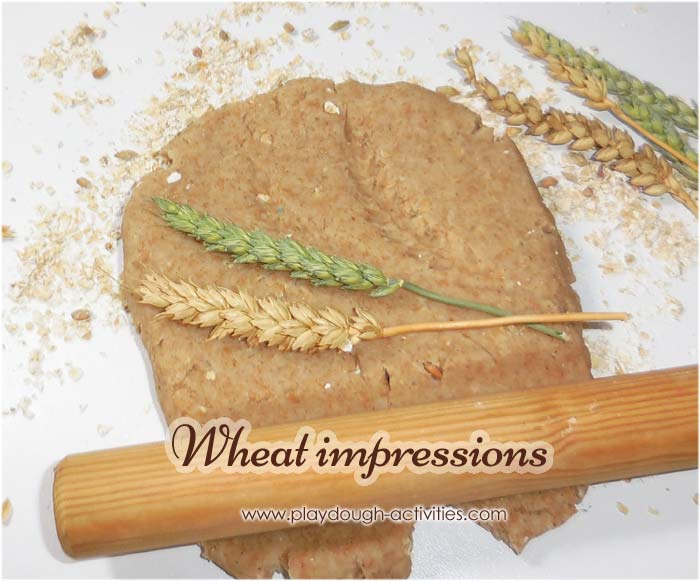
Collec
ta selection of seeds, we had bird feed and rolled oats to hand, but sunflower,
corn and poppy seeds all make excellent 'loose parts' that children can scatter and sprinkle
across the table and dough, adding a different dimension to 'bread'
making, sculpting and modelling activities.
Spices and herbs expand these sensory experiences, altering the earthy raw
dough aroma with a dusting of your favourite scent, one or other of cinnamon,
saffron, vanilla or rosemary, sage, thyme.
Educationally, this recipe provides opportunities for children to discover
where flour comes from, how they're ground and the way grains differ in terms
of our body health and well-being. Look at the benefits of wholemeal foods
- UK Grain Chain.
When included in roleplay a bakery appears! supporting children's social
skills and language development as they bake, display, describe and sell
their wares.
Physically, playdough remains an outstanding medium for exercising finemotor
skills, coordination and helping the dexterity of hands, fingers, wrists,
and arms. Important factors for young children's pre-writing ability as the
malleable compound is plaited, pummeled, rolled, shaped and cut to reflect
the ideas of the artist.
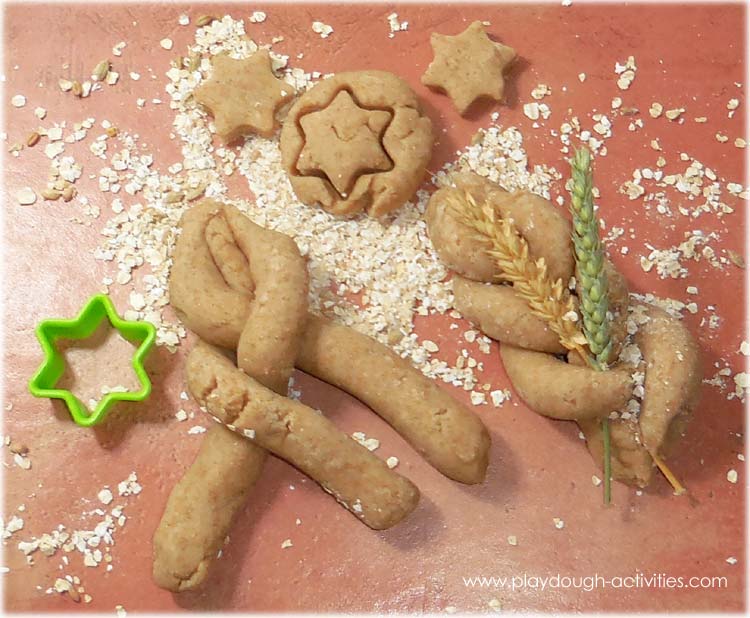
Research: Simon
Nicholson and the theory of loose parts, article on LouisaPenfold.com
More activity ideas
|
|
|
